Drop us a short note with your inquiry by filling out the contact us form.
This "how-to-connect" documentation explains the initial configuration of an example connection from Microsoft Graph to a SharePoint Online List in Office 365. We will be synchronizing data stored in Graph.
This guide presupposes that you have installed the Layer2 Cloud Connector and that you are familiar with its basic functionality. The Layer2 Cloud Connector User Documentation will provide you with all necessary information.
2. Configuring the Layer2 Cloud Connector
2.2 Configuring the Data Entity Source
2.3 Configuring the Data Entity Target
Go to the Microsoft Graph Explorer https://developer.microsoft.com/en-us/graph/graph-explorer and select the Graph endpoint that you like to read data from.
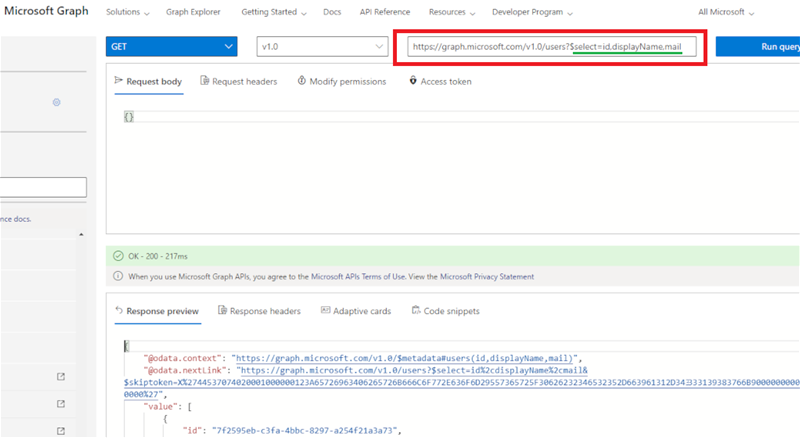
For our example we want to get Users, we go ahead and select the service endpoint (red marked in the screenshot above): /users/
Feel free to try out a select statement directly into the Graph Explorer to filter your data as shown above(green marked): $select=id,displayName,mail
Create a new connection by using the Create New Connection option in the Actions pane (right-hand side). The new connection will appear at the bottom of the Connection Manager List (left-hand side). Click on your newly created connection to open the connection configuration settings.
Choose a meaningful name for your connection and replace the current "New Connection" Connection Title with it.
Connections to Graph can be bi-directional. An initial connection should always be uni-directional to assure that both data entities are identical. Therefore, choose Left to Right as Direction.
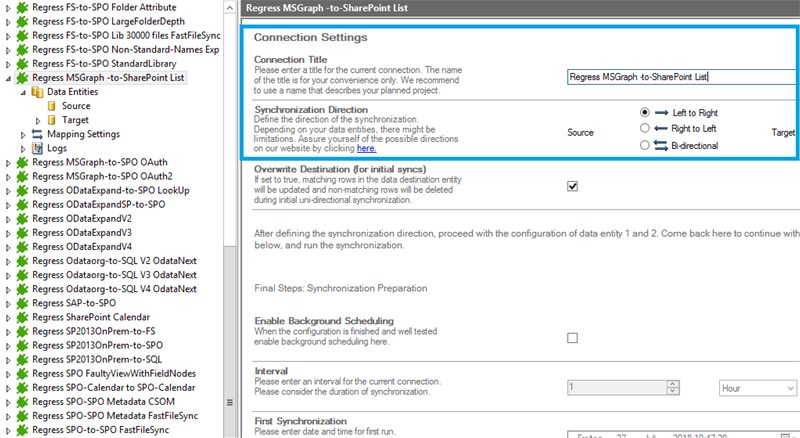
We will now set up our Data Entities. Go to the data entity “Source” to open the configuration settings.
Choose a Source Title. It is recommended to give your entities meaningful names to maintain an overview when you decide to set up multiple connections.
Select the Data Provider for OData from the data provider list. You can search for OData by typing into the selection box.
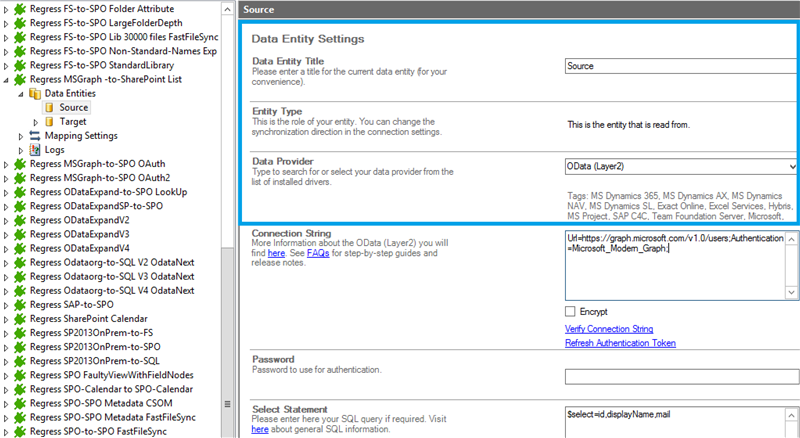
For the Connection String, we need the information mentioned in step 1. You can copy the below connection string and adjust it to match your gathered information. Use the Verify Connection String option to evaluate if the provided connection string is valid.
Url=https://graph.microsoft.com/v1.0/users;Authentication=Microsoft_Modern_Graph;
The Select Statement text box is used to define specific data queries. We will be gathering data from our Users endpoint OData answer. You can copy the below select statement and adjust it to match your needs. Save your changes by using the right-hand pane option Save Changes.
$select=id,displayName,mail

To check if all necessary columns are received, you can use the Preview Data option on the right-hand pane which will provide you with a pop-up window showing your sample data from your Graph entity.
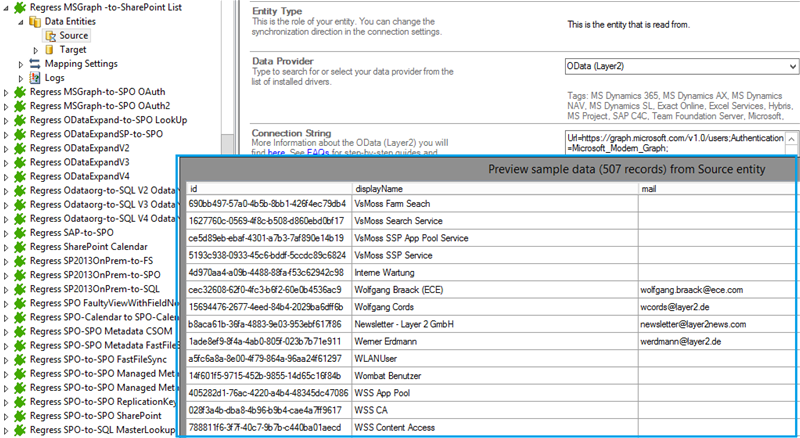
We are going to send the data to a custom SharePoint Online list. It's required that you set up this list prior to the next steps. Your list should contain matching columns according to your source entity.
Use the left-hand pane to switch to the data entity "Target". We will be using the Layer2 SharePoint Provider for this setup.
For more information about the SharePoint provider visit:
https://www.layer2solutions.com/support/cloud-connector-faqs/layer2-csom-sharepoint-ado-net-provider.
You can copy the below Connection String which contains the minimum of required properties to connect to your custom SharePoint Online list.
URL=https://your_custom_sharepoint_list_url/AllItems.aspx;Authentication=Microsoft_Modern;
Save your changes by using the right-hand pane option Save Changes.

In the next step, we will configure our mapping settings. Click on the Mappings option on the left-hand pane. If your fields from SharePoint are named identical to the fields from your source system, the Enable Auto Mapping option will match those columns. Disabling this option allows you to match your columns as needed. We enabled auto-mapping in our setup. Save your changes by using the right-hand pane option Save Changes.
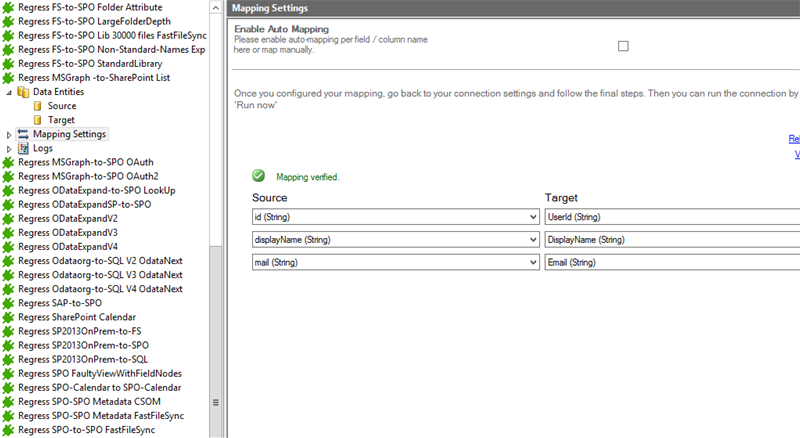
To run your connection switch back to the main connection configuration node and use the Run Now Button located on the bottom of the setup page. The Run Synchronization Toolbox will also display the synchronization process.
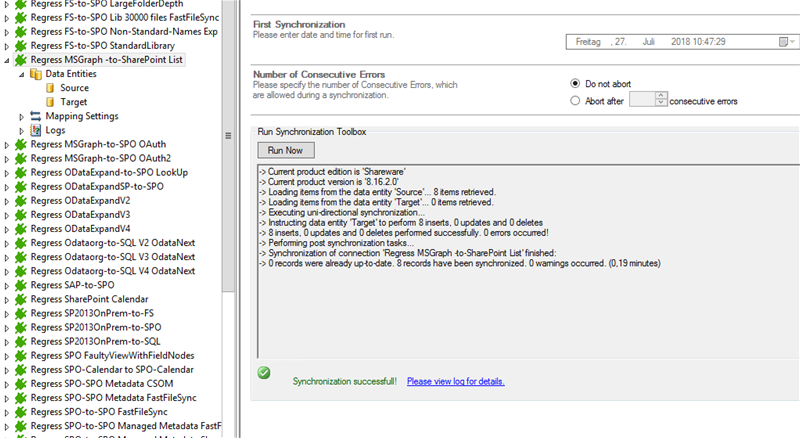
This will be the result in our SharePoint Online list after our initial successful synchronization:
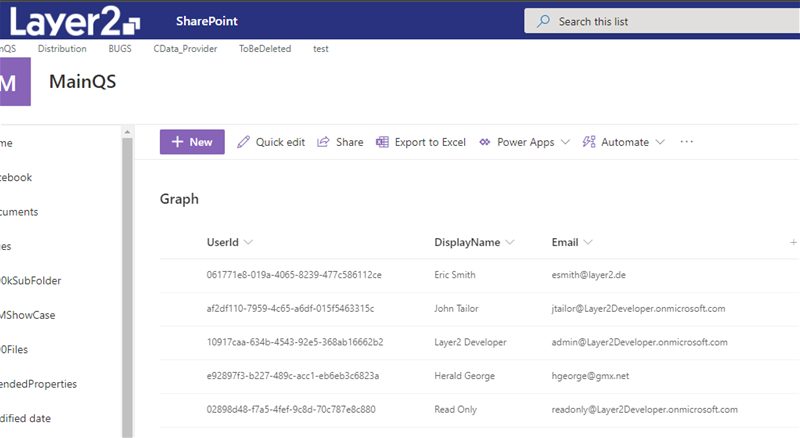
See section 3.1 for further information.
Retrieven all fields with the $select=* is a problem because at least one field doesn't allow DBNull values. It's recommended to specify the required fields, e.g. $select=id,displayname.
Creating new users isn't possible (needs a password and that's not an available field).
For Admin permissions, please use the Layer2 Cloud Connector authentication method Microsoft_Modern_Graph_Admin in the connection-string instead. The Admin authentication method is required for updating users as well. Find more information on the Layer2 user documentation under the Microsoft_Modern_Graph subject on page 148.
As far as tested, this connection supports bi-directional as well.
To see all the available endpoints, visit the Microsoft Graph API here.
You can find the Microsoft Graph metadata here.